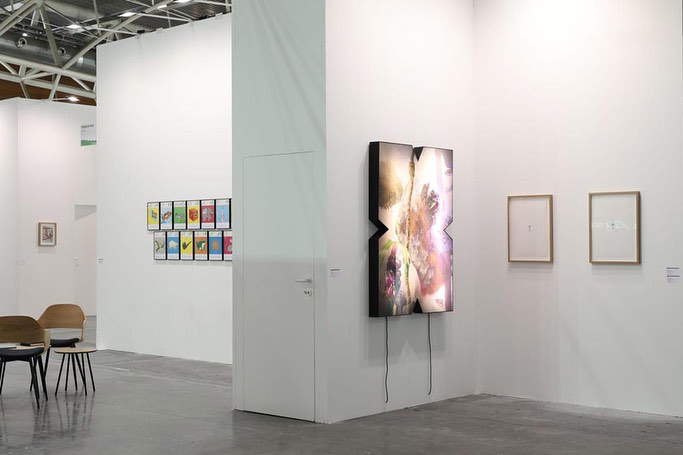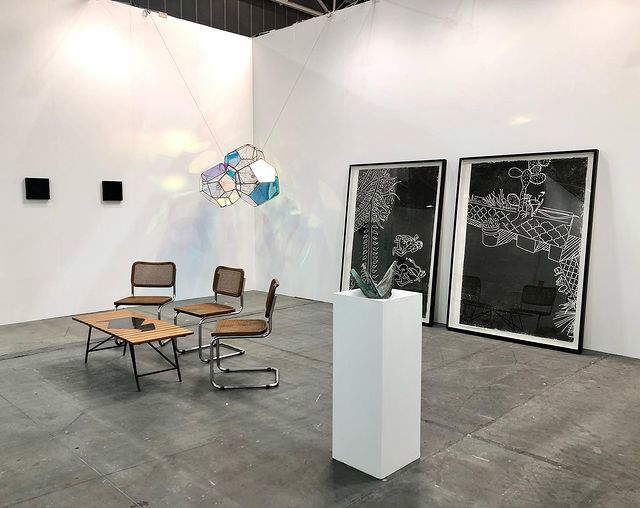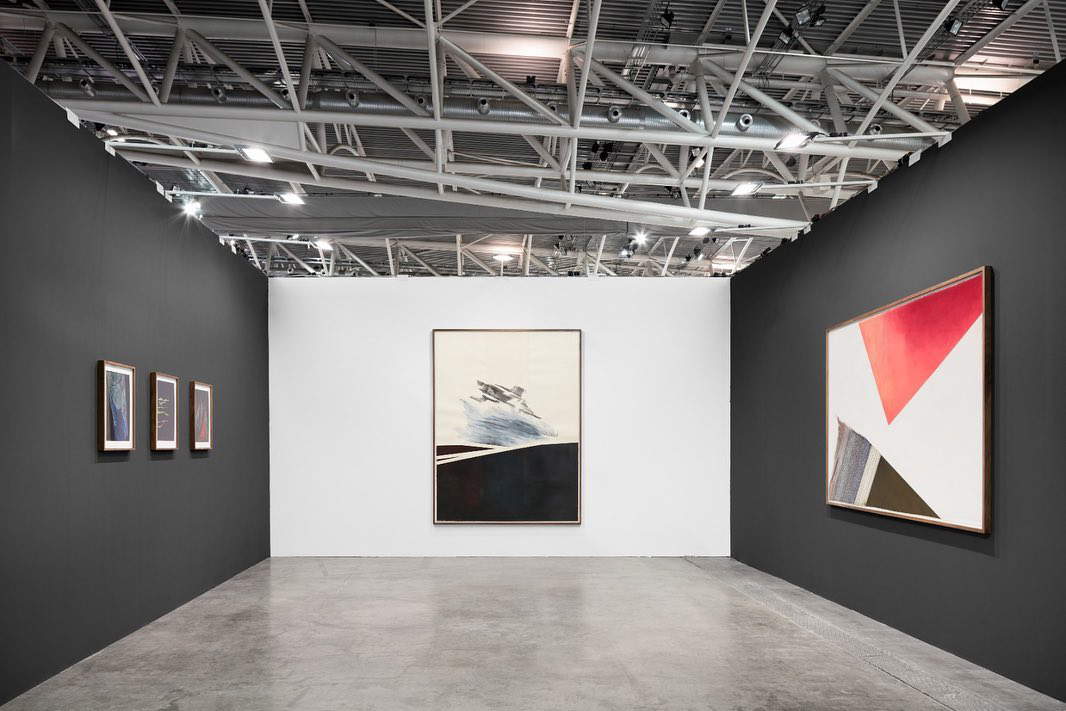The first Artissima directed by Luigi Fassi, who takes the helm of Turin’s contemporary art fair, now in its twenty-ninth edition, starts today, picking up the legacy of Ilaria Bonacossa. The first Fassi-branded fair registered very positive opinions: lots of quality in the stands, a good mix of historicized artists, mid-career artists and interesting young people, curated and quality international presences, elegance, strong presence of traditional mediums, starting with painting. In short, a clean fair that retains the traditional layout (the Main Section combined with the three sections New Entries, Monologue/Dialogue and Art Spaces & Editions and the three curated sections Drawings, Present Future and Back to the future) with a high-level proposal. After two pandemic years, the task was not an easy one, and Fassi did it brilliantly.
As with every Artissima, this year our editorial staff selected what, in our opinion, were the ten best booths. Here they are below!
The one of the London gallery directed by Saverio and Carlo Repetto is definitely one of the stands that stands out the most, especially for the “noisy” presence of an Untitled by Arcangelo Sassolino that spends the day splitting logs of wood at a slow pace, to induce the viewer to think about the ephemeral condition of our existences, a bit like the nearby, recent work Momento, a white ream of A4 sheets brutally folded. An interesting nucleus of Arte Povera, Repetto’s specialties (Kounellis, Penone, Calzolari) and the works of Mirella Bentivoglio and Elisabetta Gut, important female exponents of visual poetry, complete the proposal.

Minimalist stand that of the Neapolitan gallery, despite the five artists brought to the exhibition, which, however, complement each other well due to similarity of languages: so here is Tomaso Binga’sProverbial Alphabet that dialogues with young Antonio Della Guardia’sAlphabet of Power to demonstrate the implications of language. Also using the word are the works of the very young Teresa Gargiulo (class of 1996), who presents herself with an intimate and delicate work, while the visual impressiveness of her work is noted by the Ecuadorean Oscar Santillán, who catches the eye with his Antimundo.

The Genoese gallery dominates the Monologue/Dialogue section with a dialogue, precisely, between two important names in South American art, those of Mariana Castillo Deball and Tomás Saraceno. From the Mexican artist present, among others, two works from the recent Calendar Fall Away series, presented at the Mexico Pavilion of this year’s Venice Biennale (these are large engravings that allude to the Gregorian calendar and that of the Mesoamerican civilizations: it is a work that deals with the theme of colonization), while from the Argentinean stands out one of his peculiar aerial installations that take the observer into a world made of air and clouds.

In the Back to the future section, Dep Art stands out with a monographic booth dedicated to Imi Knoebel, one of the leading names in German abstractionism and an artist who is one of the leading names of the Milanese gallery, which also recently dedicated an important monograph to him in its spaces. The booth is an opportunity to get to know this interesting artist who, writes Anna Gritz in the critical text, “combines syntactic elements of minimalism with constructivist aesthetics, investigates the dynamics of form, color, surface and structure, exploring the unstable interstitial space between pictorial and sculptural object.”

From South Africa, specifically from the capital Cape Town, comes to Artissima the Whatiftheworld gallery, founded in 2008: it proposes a monographic stand dedicated to the young Mia Chaplin, a South African artist born in 1990, who works with painting and ceramics and stands out at the fair for her expressive and decidedly textured work, which deals with themes concerning the sphere of the feminine, with a style that is notable for its density and sensuality. An interesting revelation: the booth features large-, medium- and small-format paintings, as well as very special ceramics.

Best booth in the Drawings section seemed to us to be that of the German gallery Alexander Levy, which presents a single show dedicated to the Spanish Vicky Uslé, an artist whose work reflects her life choices that led her to remain in her native Cantabria, close to nature: her works therefore transfigure nature by communicating to the viewer the perception gained from the contact between the subject and nature (“Landscape as a genre,” says the artist, “must capture nature as it is perceived, represented and imagined”). On display are challenging large-format works, but also smaller works

One of the great names of Italian art of the 1960s, Cesare Tacchi, in dialogue with a young man, Michele Tocca (born in 1983, from Subiaco), for the Monologue/Dialogue section: this is the proposal of the Roman gallery Z20 Sara Zanin. The dialogue works very well, it allows us to discover an interesting name in emerging Italian art (soon to enter the collections of the GAM in Turin thanks to funds from the Contemporary Art Plan), and the choice to exhibit a small number of works allows us to fully appreciate similarities and differences between the two artists.

A heterogeneous nucleus of artists (there are as many as twelve: Agnieszka Polska, Jan Kiefer, Koak, Martin Aagaard Hansen, Martin Soto Climent, Niklas Asker, Max Ruf, Nova Jiang, Soshiro Matsubara, Ulala Imai, Urara Tsuchiya and Yoan Mudry), who deal with themes related to the body, sensuality, and the tragic nature of our existences: this is the proposal of London-based Union Pacific. Japanese Urara Tsuchiya’s striking basin with animalistic orgy, Mexican Martin Soto Climent’s entanglements halfway between painting and sculpture, mindful of Spatialism but used to address issues such as desire and physical decay, and American Koak’s paintings investigating the more intimate aspects of the female condition stand out.

Primo Marella’s booth, one of the most attractive in the Main Section, attracts the audience by the presence of some great works by Abdoulaye Konaté, one of the big names in contemporary African art, whose pair of large tapestries are exhibited that stand out for their bright colors and recall the African custom of using textiles also as a means of communication, and for the illusions of Japanese artist Kenji Sugiyama, whose Inside Outside plays on our perceptions by presenting us with extraordinary miniature bookcases that with a play of mirrors seem to develop deep beyond the wall.

One of the most beautiful works in all of Artissima is at the Vistamare booth: it is Muro, azzurro (Wall, blue ) by Ettore Spalletti, a large-scale work from 2016 that with the Abruzzese master’s beloved color almost makes us forget we are at a fair. Also present by Spalletti is an interesting work on alabaster, but the presence of the recently deceased great artist is not the only reason to visit Vistamare’s booth: also interesting, for example, are the new works by Lorenzo Scotto di Luzio and the small canvases by Cypriot Polys Peslikas, to whom the gallery has also dedicated a solo show in 2020.

Warning: the translation into English of the original Italian article was created using automatic tools. We undertake to review all articles, but we do not guarantee the total absence of inaccuracies in the translation due to the program. You can find the original by clicking on the ITA button. If you find any mistake,please contact us.